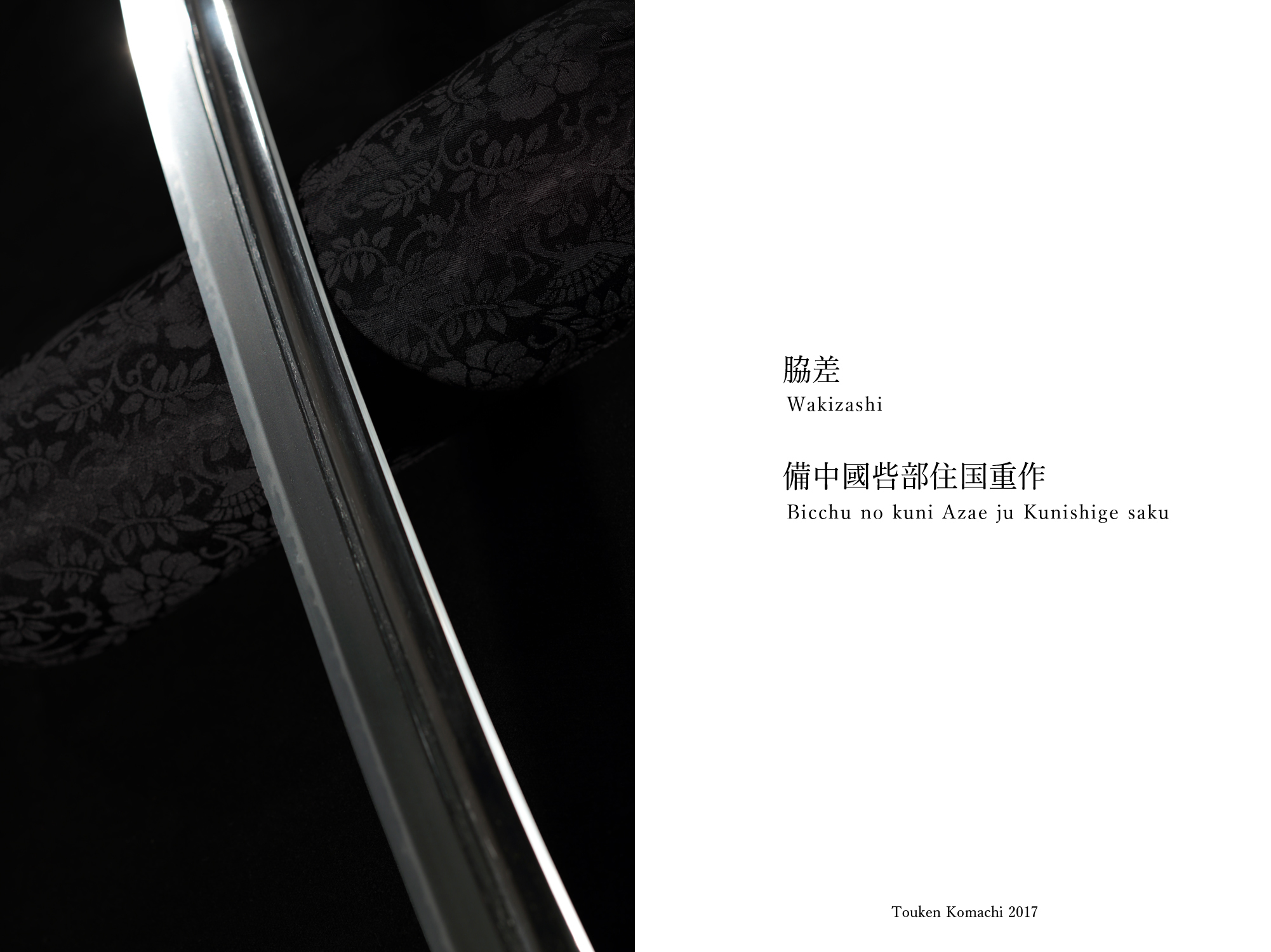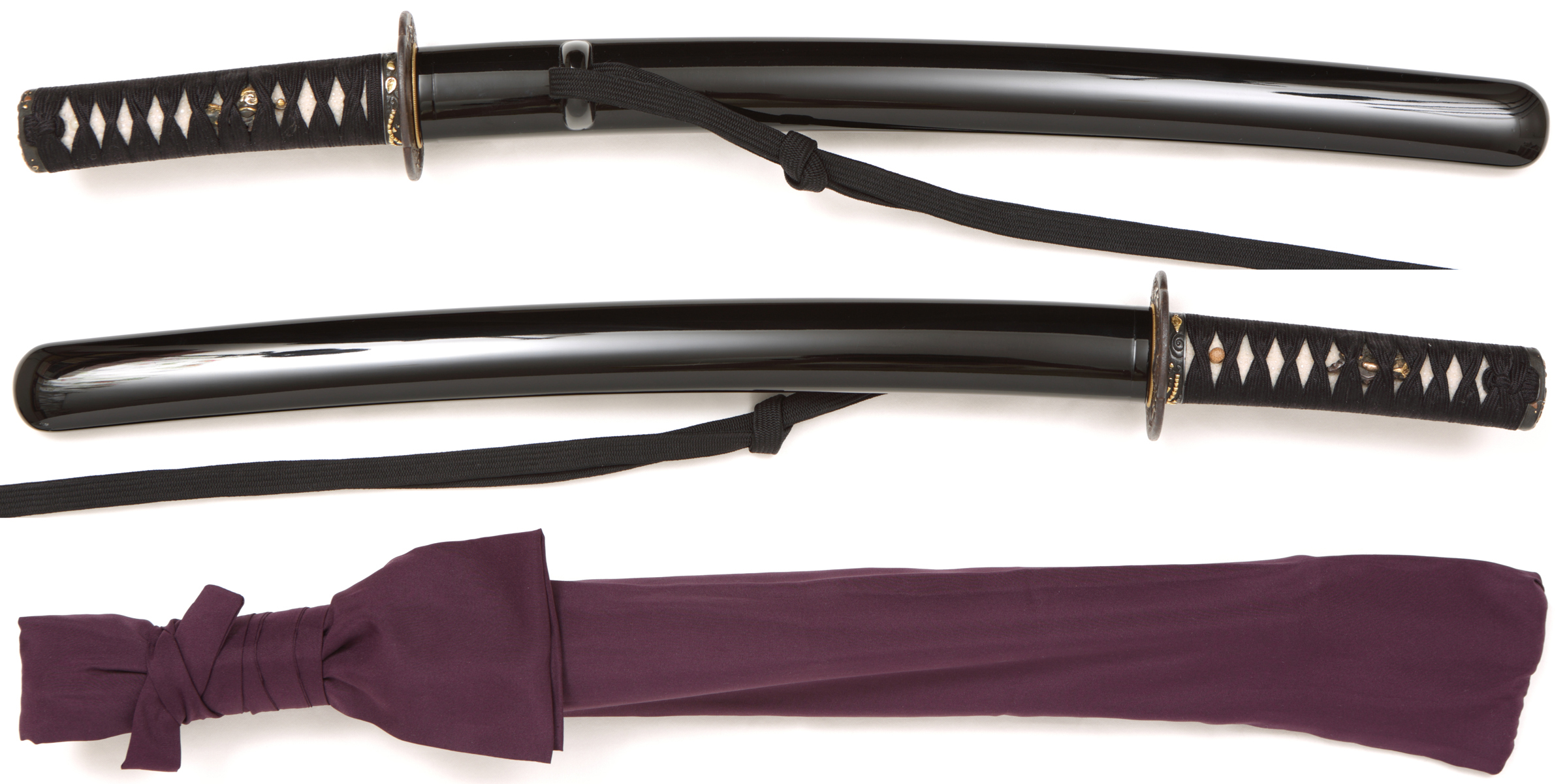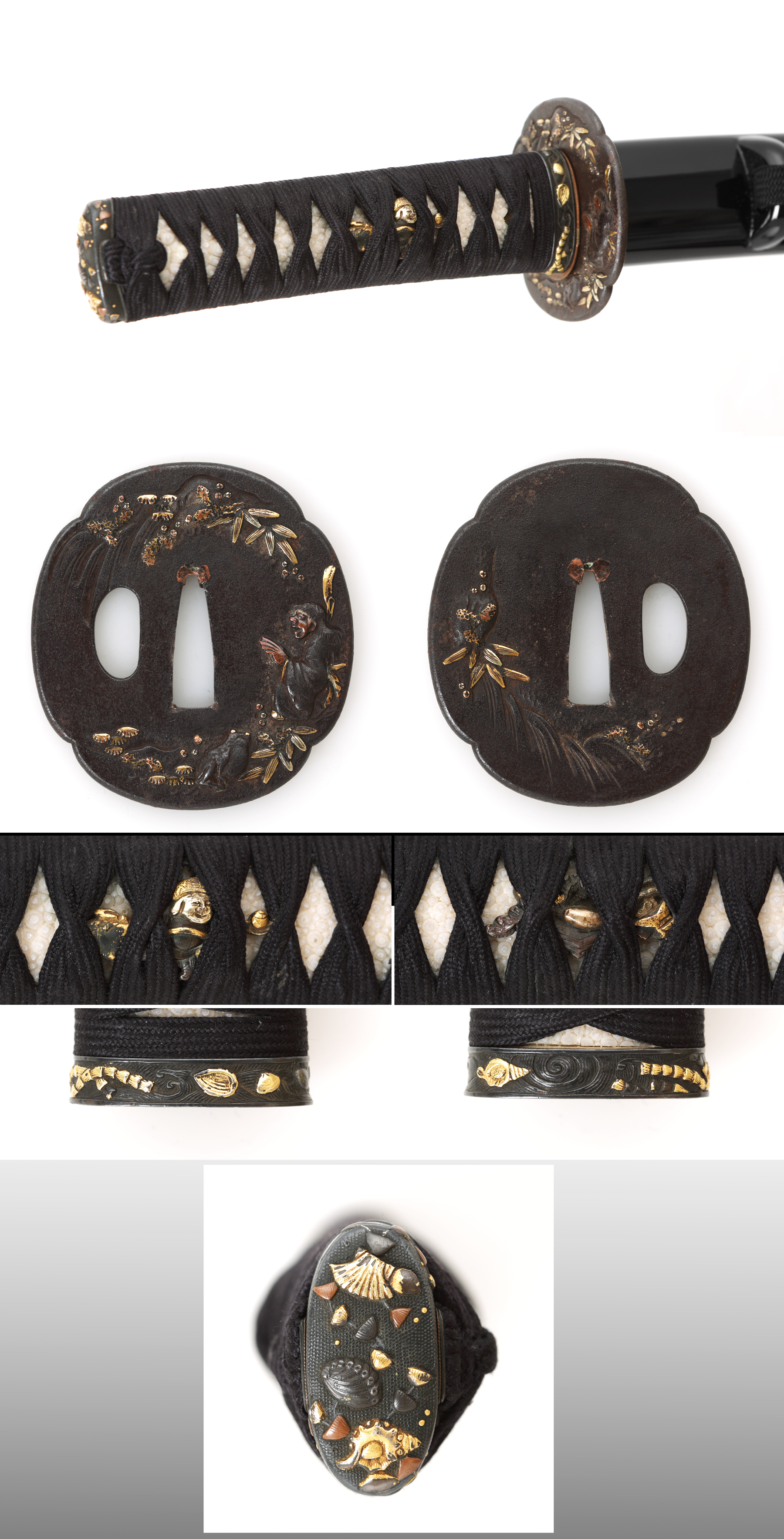

   |
Wakizashi, Shirasaya, Koshirae |
Bicchu no kuni Azae ju Kunishige saku
|
[ Signature ] omote : "備中國呰部住国重作" ura : - |
[ Size ] Blade length 39,8cm (1 shaku 3 sun 1 bu 3 rin), sori 0,9cm (2 bu 9 rin), moto-haba 3,10cm, moto-kasane 0,49cm, saki-haba 0,76 cm, mekugi-ana(hole) 1, blade weight 373g , shirasaya length 61cm, koshirae length 61,5cm |
[ Period ] Edo, the beginning of, Keichô |
[ Province ] Bicchu |
[ Feature ] Generally, the swordsmith of Bicchû in Edo period, belonged to Ô-tsuki family (who signed "国重") or Kô-no family (who signed "為家"). Both families had strong relationship each other. They had common styles for swords creation. The swords which came from Ô-tsuki family were called "Mizuta-mono". The swords which came from Kô-no family were called "Azae-Mizuta". In the book "日本刀名鑑", it mentions "swordsmiths of Mizuta lived separately. Specifically, they lived in Kôtsuki county Ebara, Eiga county Azae and Eiga county Mizuta". MIZUTA Kunishige was hired by MOURI Motochika in Eiroku 11(1568), then moved to Azae in March Tenshô 2(1574), aside of Kôriyama-jô castle of Geishû county, was first generation. This sword was created by second generation Kunishige(e.g. "三郎兵衛尉国重"(Saburo-hyôe-no-jyô Kunishige) who worked actively around Keichô era. Third generation Mizuta Kunishige has been particularly famous as "大与五国重". Referenced materials : "新版 日本刀講座 新刀編" by HONMA Kunzan, SATÔ Kanzan, Yûzankaku publishing, Heisei 9(1998), "日本刀銘鑑" ISHII Masakuni, supervised HONMA Kunzan ( Yûzankaku publishing), Heisei 15(2003) [ Conditions ] There looks some rough part above hamachi of reverse side, around monouchi of face side of hiraji and shinogi side. |
[ Attachments ] Habaki (suaka-ji, gold foiled, single), shirasaya, bag of shirasaya, koshirae, bag of koshirae and NBTHK Hozon paper (issued on 4th February Heisei28(2016)) |
  |
[ Item number ] A100517 [ Price ] SOLD |
Please order by E-mail.

About TOUKEN KOMACHI
BACK
TEL&FAX +81-(0)3-5284-9014____E-mail : s_tsukada@toukenkomachi.com
|
Copyright © 2009 Touken komachi All rights reserved.
|